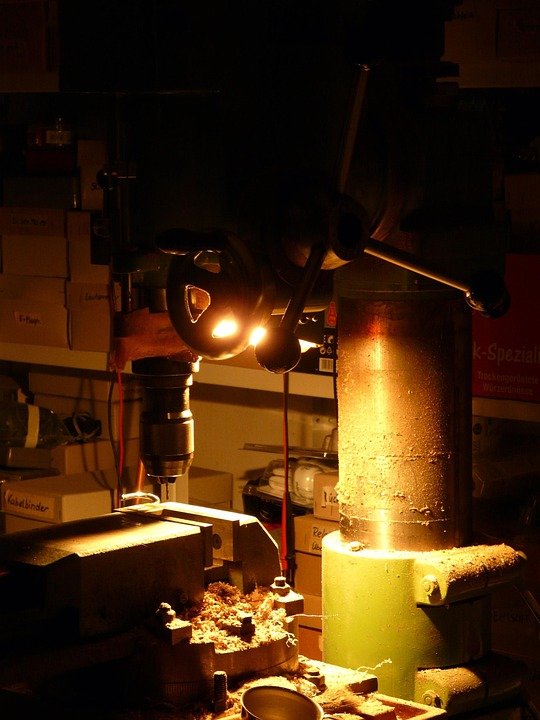Navigation Complexity: Your Expert CNC Machine Relocation Guide
Relocating CNC machines is not like mobile office furniture. These complex high-precision heavy industrial equipment works represent a huge investment that is critical to your production workflow. Poorly managed mobile risks can harm delicate components, expensive calibration issues, extended downtime, and even ineffective assurance. Whether you are moving within the facility or across the country, careful planning and execution are crucial. Drawing on the deep expertise of professional CNC manufacturers like Greatlime, this guide outlines the basic steps of a successful CNC machine relocation.
Why is appropriate relocation not negotiable
CNC machines (computer numerical control), especially complex multi-axis models such as 5-axis machining centers, integrate mechanical, electrical, hydraulic, pneumatic and precision metering systems.
- Dangerous Accuracy: The smallest misalignment, shock or vibration during movement may discard critical geometric accuracy (mode alignment, spindle perpendicularity) that requires extensive recalibration or repair.
- Sensitive Electronics: Control cabinets, motors, encoders, probes and wire harnesses are susceptible to physical shocks, moisture and electrostatic emissions.
- Structural integrity: Improper lifting or fixing can lead to structural deformation of the frame, base and moving components.
- Data loss: Uncontrolled shutdowns can damage the program, parameter or tool data stored in the controller.
- Safety hazards: Unfortunately heavy-duty components pose significant risks to personnel and property.
Phase 1: Key Pre-Movement Plans (Previous Weeks/Months)
Before success begins, before the snare arrives.
- Detailed machine evaluation:
- Record all content: Create a comprehensive inventory and photography log. Catalog model, serial number, weight, size and Accurate Location of all key components (tool changer, coolant system, probe, mode cover). Get the manufacturer’s rigging and handling manual.
- Conditional review: Record the machine’s current performance baseline – especially positioning accuracy and repeatability (use cone tests or similar if possible). This is crucial for post-mobile verification.
- Determine dependencies: Draw all connections – power supply (voltage, phase, ampere), compressed air lines, coolant lines, drains, network cables and grounding.
- New site preparation:
- Infrastructure Verification: Ensure that the new location meets all requirements:
- Base: Sufficient load bearing capacity, level (usually – <0.1mm/m tolerance) and vibration damping (if required).
- Utilities: The correct power supply (voltage, phase, frequency) has the appropriate capacity circuit breaker and/or transformer nearby. Suitable for compressed air supply and ducts for coolant/drain fluid. Enough machine movement and future maintenance.
- environment: Stable temperature and humidity controls align with the specifications of the machine.
- Logistics visits: Confirm clear paths from the loading dock to the final location, including door width along the route, ceiling height and floor load limits. Identify any potential obstacles.
- Infrastructure Verification: Ensure that the new location meets all requirements:
- Develop a relocation plan:
- Disassembly Strategy: Define exactly what will be removed (e.g., tool changer, tray changer, splash guard, countertop, delicate probe, control pendant). Tag each component with a consistent system (tags, photos, charts).
- Packaging Plan: Identify custom slat requirements for machine base and sensitive subassemblies. Source antistatic packaging, desiccant and specialized fill/support blocks.
- Shipping options: Choose an experienced logistics provider High-value, sensitive capital equipment. Options include flatbed beds, follow-up decks, air trailers, and even specialized climate-controlled transport. Verify insurance coverage level.
- Professional rigging: Crucially, specialize in CNC equipment certification cable mounts and Millwrights. Their expertise in using spreaders, load levelers and safety enhancements for load rated slings is crucial. Including machine rigging/demolition familiar experts Your specific model.
- Internal Team/Contractor Roles: Assign explicit responsibilities for machine preparation, documentation, supplier coordination, site supervision and post-mobile testing.
- Emergency Plan: Consider potential delays, unexpected site issues and buffering time for post-install troubleshooting.
Phase 2: Disassembly and Preparation (Move a few days ago)
- Controlled Close:
- Power the machine controller and main circuit breaker according to the manufacturer’s procedures.
- Safely disconnect all utilities (power, air, coolant). The lid or plug opens the wire to prevent contamination.
- Perform final program and parameter backup forward Any disconnection. Document controller settings.
- System disassembly:
- Follow the rigging manual: Strictly adhere to the OEM’s disassembly sequence for operation.
- Delete vulnerable items: Carefully separate the components identified in the plan (tool hand change, probe/work light, control pendant, Z-axis motor/encoder, hydraulic/pneumatic actuator). Use appropriate antistatic procedures. Place delicate electronics in a custom static safety pack.
- Safe moving parts: Lock the moving axis according to manual (braking application, blocking). Use transport blocks or brackets provided by OEM to secure the spindle head, slideshow and turret internally. If it is not available, please consult the manufacturer for an approved method – Never improvise.
- Protect critical surfaces: Covering exposed method with protective material, ball screws, spindle ears and precision floor surfaces (approved plain paper, wood blocks, VCI paper/corrosion inhibitors). Sealed openings for dust, fries and moisture imports.
- Carefully labeled: Each removed component, cable connector, hose coupling and mounting point must be clearly marked according to the predefined system.
Phase 3: Loading, Transporting and Unloading (Moving Day)
- Machine basic processing: Rigging uses calibrated lifting equipment. Boom distributes load; the sling is located only at the specified lift point specified in the manual. Make sure the machine is flat and lowered during lifting.
- Ensure shipping: The machine base enters a heavy duty skateboard with integrated forklift pockets. The capacity of the forklift must exceed the machine weight. The base uses chains, adhesives or specialized belts to lag directly behind the transport load bed. Sensitive subassemblies travel with safe, shocking absorption crates.
- transportation: Choose a bump and sharp turn that minimizes the route. Qualified drivers experience high value loads. Vibration damping of the air suspension is highly recommended.
- uninstall: The reverse of the load. Very cautious to prevent any impact or sudden movement. Position the machine base accurately on a prepared foundation. Only remove the load effect after the machine is stable.
Phase 4: Reassembly and debug (usually a manufacturer/expert task)
Reorganization is a crucial place for OEM technicians or highly professional Millwrights:
- Positioning and Level: Place the machine base accurately on the machine base, or place the laser tracker or laser tracker on the ready base. Anchor firmly. Upgrades are basic – non-negotiable steps.
- System reassembly: Use tags and documents to delete components in reverse order of disassembly. Make sure all mechanical fits are correct (no mandatory components) and that all connectors are properly matched and secured.
- Reconnect to utilities: Cleverly connect power, air, coolant and drainage. Verify pipeline integrity. Qualified electricians must handle the power connection.
- The pillars of the process: Calibration and alignment: Using precision instruments (laser interferometers, electronic levels, conical systems, etc.), technicians will carefully inspect and make adjustments:
- Machine geometry (square, straightness, axis angle).
- Spindle jumper and perpendicularity.
- Align the way.
- Tool changer position accuracy.
- Coordinate system mapping.
- Potential recalibration of the scale/encoder.
- This stage is highly technical and requires specialized training and equipment.
- Comprehensive testing and verification:
- Electric controller diagnostics.
- Functional Check: Verify all shaft movements, spindle operation at various speeds, coolant flow, lubrication system, tool changer sequencing, safe interlocking, probe functionality.
- Accuracy test: Run specific calibration routines and test cuts to verify the accuracy and repeatability of positioning to move the baseline relative to the recorded front. This proves that the machine meets its original prescribed tolerances.
Why work with professionals like Greatlight Trights
Trying to complex CNC relocation without the right expertise is a high risk business. As a professional five-axis CNC machining manufacturer, Greatlight has an intricate understanding of the internal functions of these machines and the key tolerances involved. We bring:
- Deep machine-specific expertise: Learn about disassembly sequences, operating points, software parameters and calibration protocols for various CNC brands and models.
- Accurate calibration capability: Access state-of-the-art metrology equipment (laser trackers, Ballbar Systems, CMMs) and trained certified technicians.
- Special coordination: Project management handles planning, logistics, operation coordination, installation and seamless commissioning.
- Reduce risks: Experience in anticipating and resolving issues before causing damage or substantial downtime. Comprehensive coverage.
- Dedicated to minimizing downtime: Effective execution enables your critical equipment to produce high-quality parts faster. Our advanced five-axis functionality also means we understand the absolute necessity of precision.
in conclusion
Relocation of CNC machines is a significant logistical and technical commitment that requires specialized skills, meticulous planning and rigorous execution. Cutting corners not only has the performance and life of the machine, but also risks the operator’s safety and production planning. The financial impact of Botched Moves (repair, downtime, scrap parts) far outweighs the prudent investment in professional relocation services. By following the structured, expert-supported approach outlined above and working with experienced providers, you can ensure that important CNC assets arrive safely at their new location, perform specifications immediately, and contribute effectively to your production goals with minimal disruption.
FAQ: CNC machine relocation
Question 1: Can my regular facilities or general porter handle my CNC machines?
one: Not recommended. CNC machines require specialized knowledge for safe disassembly (especially removing sensitive components), handling risks severely and moving after precise calibration. Use only certified rigging with experience using CNC equipment and partner with suppliers that provide machine-specific installation/calibration expertise.
Q2: How long does it take to relocate a typical CNC machine?
one: There is no answer. It ranges from a small machine within a factory for a few days to a long distance of a large, complex 5-axis system for weeks. Factors include machine complexity, disassembly level, distance, on-site preparation requirements, and calibration complexity. Thorough planning provides a realistic timeline.
Question 3: What should I budget for moving beyond my body?
one: Expected cost:
- Professional handling and machine disassembly/reassembly/Millwright services.
- Specialized packaging/crate.
- Freight/Transport (Overload Permit with Special Licenses is usually required).
- On-site preparation (new basic work, utilities upgrade).
- Calibration and testing by OEM or professional technicians.
- Unexpected events (usually 10-20%).
- Production downtime cost.
Q4: How important is it to calibrate the machine after placing it in a new position?
one: Critical. Inherent movement can destroy the machine’s calibration geometry. Accurate calibration using specialized metrology tools (laser, cone, electron level) must be restored and verified that the machine meets its original geometric accuracy and position tolerances. Skipping this can lead to machining errors and scrap parts.
Q5: What specific preparations are needed for the new location?
one: Basic preparations include:
- Base: Enough load capacity (> machine weight), if a new plate is needed, pour it into the design correctly and upgrade it to machine specifications (usually within very tight tolerances).
- Utilities: Correct power supply (verified voltage, phase, frequency, sufficient ampere, disconnect from nearby). Sufficient supply of clean/dry compressed air. Meets cooling/cooler requirements. Coolant drainage and supply pipes. Appropriate grounding key.
- Right to use: Clear path from conveying point to final location (door width, ceiling height, floor capacity).
- environment: Temperature/humidity control for each machine specification, and vibrations of other devices are minimized.
Question 6: How do I make sure my machine data is not lost during the movement?
one: Before any disconnection or toggling of the power supply:
- Complete backup of all controller parameters, macros, offsets, tool tables and critical programs to external drives or USB sticks. Follow the OEM backup procedure.
- The screen for document setting key parameters (if there is no backup option).
- Apparently marked backup media.
- Backups firmly with sensitive electronic devices.
Question 7: Greatlight If I am not a processing customer, will I provide CNC relocation services?
one: Yes! Greatlight provides comprehensive relocation, installation, calibration and preventive maintenance services for high-precision machining equipment with the deep expertise of five-axis CNC manufacturers, whether you use our production services or not. Please contact us to ensure that your CNC assets are safe and accurately moving your CNC assets.


















